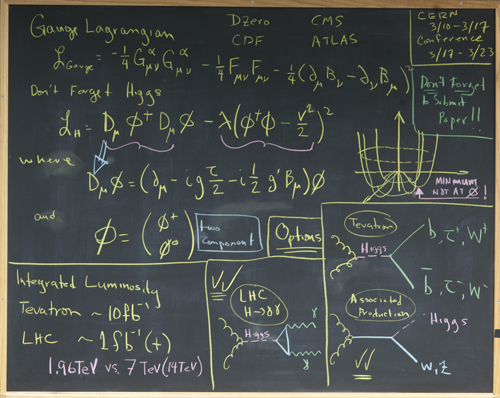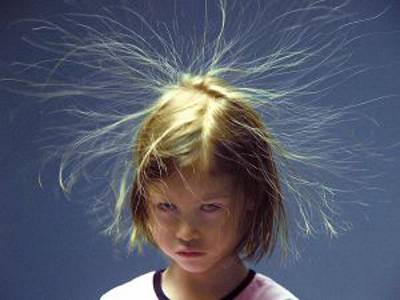The Mysterious Physics of 7 Everyday Things
Intro

Physicists have figured out some extremely fine details of the universe, from the radius of black holes to the behavior of subatomic particles neither of which we can even see. It may surprise you to learn, then, that they lack explanations (or have only recently stumbled upon them) for many common phenomena we observe in daily life.
As you'll learn in the following slides, some of the most mysterious things of all may be those that, on the face of it, seem mundane.
Nuts

Perhaps you've noticed that, in bowls of mixed nuts, the Brazil nuts always seem to be sitting on top. This is known as the "Brazil nut effect," and the seemingly mundane phenomenon is actually one of the biggest unsolved mysteries in many-body physics the science that describes large quantities of interacting objects.
Among an assortment of things (whether they be nuts, sedimentary deposits, or other objects of varying sizes), larger pieces rise to the top over time in spite of their greater gravitas, while smaller objects tend to sink lower in the pile over time. Perhaps the small stuff is trickling through cracks. Convection currents may also play a role, as might condensation of smaller particles. All of these possibilities and a few more probably contribute to the Brazil nut effect, but no one knows which ones, or to what extent, so no successful computer simulations of the phenomenon have been made.
Not only nut manufacturers, but also physicists, astronomers and geologists would all benefit from an understanding of the effect, so next time you're eating nuts or granola, or fishing the crumbs out of the bottom of a bowl of Doritos, try contemplating the physics involved.
Foam

Had a bubble bath today? Maybe not but you've probably shaved, washed dishes, had a latte or beer, or, if you're lucky, eaten a piece of pie topped with a puff of whipped cream.
We encounter foam so often that few of us step back and fully appreciate how weird the stuff really is. For starters, consider this: Is whipped cream a solid, a liquid, or a gas?
Get the world’s most fascinating discoveries delivered straight to your inbox.
According to Douglas Durian, a professor of physics at UCLA, foams are typically 95 percent gas and 5 percent liquid. Somehow these add up to give them certain traits of solids, too. The gas in the foam separates the liquid to form a matrix of tiny bubbles, and if the bubbles' liquid walls are rigid enough, the foam can sometimes keep its shape.
However, no formula exists for predicting exactly how stiff or oozy a foam will be based on the size of its bubbles or the amount of liquid it contains. "The physics of foam is poorly understood," Durian told NASA Science.
Ice

A century and a half of scientific inquiry has yet to determine why ice can make you fall down. Scientists agree that a thin layer of liquid water on top of solid ice causes its slipperiness, and that a fluid's mobility makes it difficult to walk on, even if the layer is thin. But there's no consensus as to why ice, unlike most other solids, has such a layer.
Theorists have speculated that it may be the very act of slipping making contact with the ice that melts its surface. Others think the fluid layer is there before the slipper ever arrived, and is somehow generated by the inherent motion of surface molecules.
We know you're looking for someone or something to blame, as you lie there on the ground fuming, but unfortunately the jury is still out on this one. [The Surprisingly Strange Physics of Water ]
Cereal

You may or may not have pondered why your breakfast cereal tends to clump together or cling to the sides of a bowl of milk. Dubbed the Cheerios Effect by scientists, this clumping phenomenon applies to anything that floats, including fizzy soda bubbles and hair particles in water after a morning shave.
Dominic Vella, a graduate student now at Cambridge University, and Lakshminarayanan Mahadevan, a mathematician from Harvard University, were the first to explain the effect in terms of simple physics, which they did in a 2005 paper. The Cheerios Effect, they proved, results from the geometry of a liquid's surface.
Surface tension makes the milk's surface cave in slightly in the middle of the bowl. Because water molecules in the milk are attracted to glass, the milk's surface curves upward around the bowl's edge. For this reason, pieces of the cereal near the edge float upward along this curve, appearing as if they're clinging to the edge.
Also because of surface tension, cereal floating in the middle of your bowl dents the milk's surface, creating a dip in it. When two pieces of cereal touch, their two dents become one, and, resting in it, they stick together.
Magnets

Magnets: pretty weird, huh? What's up with them?
Jearl Walker, a physics professor at Cleveland State University and coauthor of the widely used textbook "Fundamentals of Physics" (Wiley, 8th Edition 2007), explains that magnetic fields naturally radiate outward from the electrically charged particles that make up atoms especially electrons.
Normally in matter, the magnetic fields of electrons point in different directions, canceling each other out. (This is why the electrons in your body don't cause you to stick to your fridge when you walk by it.) But when the magnetic fields all the electrons in an object align in the same direction, as occurs in many metals (and, obviously, in magnets), a net magnetic field is generated. This exerts a force on other magnetic objects, either attracting or repelling them depending on the direction of their own magnetic fields.
Unfortunately, trying to understand magnetism on a deeper level is essentially impossible. Though physicists have come up with a theory called "quantum mechanics" that very accurately explains the behavior of particles including their magnetism there's no way to intuitively understand what the theory really means.
Physicists wonder: why do particles radiate magnetic fields, what are magnetic fields, and why do they always align between two directions, giving magnets their north and south poles? "We just observe that when you make a charged particle move, it creates a magnetic field and two poles. We don't really know why. It's just a feature of the universe, and the mathematical explanations are just attempts of getting through the 'homework assignment' of nature and getting the answers," Walker told Life's Little Mysteries.
Static

Static shocks are as mysterious as they are unpleasant. What we know is this: They occur when an excess of either positive or negative charge builds up on the surface of your body, discharging when you touch something and leaving you neutralized. Alternatively, they can occur when static electricity builds up on something else a doorknob, say which you then touch. In that case, you are the excess charge's exit route.
But why all the buildup? It's unclear. The common (and probably partly correct) explanation says that when two objects rub together, friction knocks the electrons off the atoms in one of the objects, and these then move onto the second, leaving the first object with an excess of positively charged atoms and giving the second an excess of negative electrons. Both objects (your hair and a wool hat, say) will then be statically charged. But why do electrons flow from one object to the other, instead of moving in both directions?
This has never been satisfactorily explained, and a recent study by Northwestern University researcher Bartosz Grzybowski found that it may not even be the case. As detailed in the June issue of the journal Science, Grzybowski found that patches of both excess positive and excess negative charge exist on statically charged objects. He also found that entire molecules seemed to migrate between objects as they are rubbed together.
Clearly, the explanation of static is changing.
Rainbows

Rainbows form as sunlight shines on droplets of moisture in the Earth's atmosphere. The droplets act like prisms, "refracting" or separating light into its component colors and sending them shooting off at a range of angles between 40 and 42 degrees from the direction opposite the sun.
Of course, rainbows are no longer scientifically mysterious. They result from the way light passes through spherical drops: it is first refracted entering each drop's surface, reflected off the back of the drops, and again refracted as it leaves the drops, with all these rebounds giving it its final angular direction. This explanation has been known since the days of the 17th century physicist Isaac Newton. [Why Can't We Reach the End of the Rainbow? ]
But imagine how mystical rainbows would have seemed before then! Because they are so beautiful and were so inexplicable they were featured in many early religions. In ancient Greece, for example, rainbows were thought to be the paths made by the messengers of the gods as they traveled between Earth and heaven.
Follow Natalie Wolchover on Twitter @nattyover. Follow Life's Little Mysteries on Twitter @llmysteries, then join us on Facebook.
Natalie Wolchover was a staff writer for Live Science from 2010 to 2012 and is currently a senior physics writer and editor for Quanta Magazine. She holds a bachelor's degree in physics from Tufts University and has studied physics at the University of California, Berkeley. Along with the staff of Quanta, Wolchover won the 2022 Pulitzer Prize for explanatory writing for her work on the building of the James Webb Space Telescope. Her work has also appeared in the The Best American Science and Nature Writing and The Best Writing on Mathematics, Nature, The New Yorker and Popular Science. She was the 2016 winner of the Evert Clark/Seth Payne Award, an annual prize for young science journalists, as well as the winner of the 2017 Science Communication Award for the American Institute of Physics.



